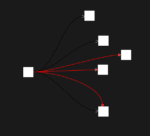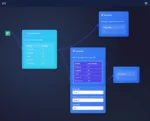
by tyler garrett | Jun 18, 2025 | Data Processing
In today’s data-rich environment, turning complex temporal data into actionable insights is essential. Businesses gather massive volumes of data points continuously, but these fragments only become valuable when analyzed accurately over time. Temporal pattern matching is no longer just another analytics strategy—it is rapidly becoming a cornerstone of strategic decision-making across various sectors. From healthcare analytics to financial fraud detection, the capability to identify recurring patterns and correlations within time-series data sets provides unmatched clarity and predictive power. Understanding temporal patterns goes beyond superficial data interpretation; it involves leveraging advanced algorithms and smart analytics solutions, propelling your organization’s ability to respond swiftly and confidently to dynamics in trends. In this article, we delve deep into temporal pattern matching, its methodologies, practical use cases, and why business decision-makers should include this powerful analytical approach in their strategic analytics initiatives.
Understanding Temporal Pattern Matching
Temporal pattern matching consists of identifying recurring trends, occurrences, or anomalies within time-based data sequences. Unlike static data analysis, temporal pattern matching specifically takes into account the chronological order and relationships present within time-series data warehouses. It involves systematically scanning through large streams of continuous or discrete temporal data to detect pre-specified or unknown patterns exhibiting unique sequential structures. Effective temporal matching leverages advanced computational approaches like dynamic programming, machine learning algorithms, and symbolic representation techniques, equipping decision-makers to identify connections previously hidden beneath the surface.
For example, retail businesses utilize temporal pattern matching to recognize seasonal customer buying behaviors, enabling proactive inventory management. Healthcare providers apply these patterns to patient monitoring datasets, uncovering early signs of deteriorating health. Financial institutions regularly employ temporal analysis to detect anomalous transaction activities, significantly enhancing their fraud detection capabilities.
What separates temporal pattern matching from conventional analytics is its intense focus on temporal sequences and rhythms evolving over a defined timeframe. These patterns might span from microseconds in high-frequency trading data streams to multi-year periods in macroeconomic analysis. Mastering temporal analytics equips organizations to make precise data-driven decisions across diverse scenarios, offering competitive advantages in rapidly changing markets.
Key Methodologies Behind Effective Temporal Pattern Matching
Sliding Window Techniques
Among the foundational methodologies used in temporal analysis are sliding window techniques, which systematically scan sections of sequential data to identify significant temporal relationships. Analysts configure window parameters—such as window time limits, overlap points, and scale—to meticulously examine datasets for underlying anomalies or patterns. This flexibility allows analysts to adjust granular levels of data inspection, making sliding window methods extremely valuable in dynamic scenarios like intrusion detection or customer behavior analysis. Businesses using sophisticated pipeline orchestration platforms benefit greatly from sliding window approaches, efficiently parsing massive amounts of streaming data for actionable insights in real-time.
Dynamic Time Warping (DTW)
Dynamic Time Warping is another powerful approach in temporal pattern discovery, particularly valuable in recognizing similar temporal sequences despite variations in speed or duration. DTW algorithms dynamically align sequences, calculating optimal warping paths that minimize distance between them. This makes DTW uniquely suited for areas such as speech recognition, sensor data alignment, and financial series forecasting. By incorporating DTW, businesses can effectively compare disparate temporal sequences, unlocking accurate identification of underlying trends and decision-critical insights.
Machine Learning and Neural Network Approaches
Advanced methodologies leveraging machine learning, deep neural networks, and advanced embedding approaches have become mainstream for identifying intricate temporal patterns. Neural networks and Long Short-Term Memory (LSTM) models can accurately interpret sequence data, learning complex temporal correlations and nuances that traditional methods might miss. For broader embedding and representation analytics, implementing optimized vector data structures becomes essential—check out our guide on vector database selection criteria to select an ideal infrastructure matching your analytical needs. Embracing these bleeding-edge analytical models means organizations gain unprecedented analytical precision and predictive power, particularly valuable for forecasting, anomaly detection, and proactive decision-making strategies.
Real-World Applications of Temporal Pattern Matching
Fraud and Cybersecurity Detection
In cybersecurity and financial fraud prevention, temporal analytics detects subtle yet impactful deviations from standard user activity profiles or transaction patterns. Bank systems monitor transactions continuously, leveraging temporal matching solutions to detect unusual activities instantly. Analysts can swiftly validate suspicious transactions, drastically reducing false positives and mitigating genuine threats. Organizations prioritizing context-sensitive environments may benefit greatly by integrating advanced techniques from automated context-aware policy enforcement frameworks into their analytics infrastructures.
Healthcare Monitoring and Diagnostics
Healthcare organizations rely heavily on temporal pattern matching to evaluate patient vital signs, identify alarming deviations from stable patterns, and forecast possible health events. For instance, clinicians employ temporal algorithms to track patterns in patient vital data sequences, providing timely alarm systems capable of identifying risks before serious complications occur. This significantly boosts patient safety and allows medical teams to intervene proactively. The strategic deployment of temporal analytics solutions holds immense potential for safeguarding public health, complementing initiatives discussed on our publication regarding the crucial role of data analytics in enhancing public safety.
Customer Retention and Marketing Analytics
Organizations can significantly enhance their customer relationship management with precise temporal pattern matching. By assessing time-based purchase frequencies and customer engagement sequences, companies can optimize their retention and marketing strategies. These temporal insights help marketers precisely anticipate customer attrition points and proactively tailor campaigns, increasing satisfaction and brand loyalty. Additionally, integrating these temporal insights with advanced concepts like Customer Lifetime Value (CLV) Analysis allows businesses to strategically invest in the right customers and optimize marketing resources effectively.
Challenges and Considerations When Implementing Temporal Pattern Analytics
Despite its impressive capabilities, effective temporal pattern matching requires careful consideration of several key challenges. The complexity inherent in capturing temporal relationships varies based on solution-specific requirements, computational resources, and available technical expertise. Ensuring the temporal analysis approach remains efficient, scalable, and contextually accurate demands intelligent solution design, informed analytics architecture choices, and thoughtful investment in infrastructure resources and analytical toolkits.
Detecting and managing inconsistencies or missing data points is equally essential. Organizations should implement robust frameworks capable of accurately finding and handling these gaps. Check out our comprehensive guide discussing best practices in orphaned data detection and efficient management frameworks. Furthermore, with increasingly large volumes of data involved, optimizing processing efficiency becomes unavoidable. Organizations using Apache Spark, for example, may improve their analytics speed and efficiency by carefully implementing our outlined best practices for optimizing Spark jobs.
Successfully navigating these challenges involves leveraging robust ETL processes to automate and streamline temporal data ingestion, processing, and analytics. Partnering with seasoned professionals that understand advanced ETL consulting services provides organizations with the necessary expertise and experience, overcoming typical data analytics pitfalls and ensuring optimized outcomes.
Embracing the Temporal Data Analytics Revolution
As analytical models mature and computational technologies continue evolving, temporal pattern matching stands out as a transformative analytics methodology crucial for modern businesses. Organizations investing in these powerful analytical frameworks position themselves ahead of competitors by significantly improving predictive capabilities and strategically informed decision-making processes. With robust temporal analytics, businesses no longer merely react—they confidently predict, strategize, and proactively navigate complexity in their operational environments. Now is the optimal moment for any forward-thinking organization to incorporate temporal pattern matching into their core analytics strategy, higher forecast accuracy, swiftly detected anomalies, stronger customer relationships, and sustaining business growth.
Ready to harness the power of temporal pattern matching today’s data environments? Talk with experienced analytics strategists who can guide you step-by-step towards deeper, more actionable insights.

by tyler garrett | Jun 18, 2025 | Data Processing
In today’s technology landscape, enterprises face a constant influx of diverse systems, each developed independently, bringing their unique languages, data structures, and communication protocols. This heterogeneity offers innovation opportunities, yet simultaneously presents integration challenges that can inhibit productivity and growth. Consequently, executives, architects, and technical decision-makers seek ways to seamlessly manage these disparate systems within cohesive, unified architectures. Enter the Bridge Pattern—a sophisticated structural design pattern that allows organizations to efficiently integrate AI agents and diverse systems, abstracting implementation-specific details from higher-level interfaces. Let’s delve deeper into how leveraging the Bridge Pattern can empower your enterprise to streamline innovation, enhance system interoperability, and create a robust foundation for advanced data analytics.
Understanding the Bridge Pattern: Structure and Purpose
The Bridge Pattern, at its core, decouples abstraction from its implementation, allowing both to vary independently without binding user-facing solutions to underlying complexities. This conceptual separation increases flexibility, scalability, and maintainability within software systems—essential elements in today’s fast-paced, innovation-driven environments.
Imagine your enterprise operates systems built upon diverse technological stacks, including legacy databases, modern cloud environments, and microservices. Directly coupling high-level operations to these specific implementations quickly leads to rigid, fragile architectures, making it difficult to adapt to evolving technological standards or industry demands. Here is where the Bridge Pattern shines—abstracting operations using an intermediary interface layer to communicate with underlying implementations seamlessly. It essentially “bridges” heterogeneous systems, allowing your organization to adapt to changing requirements with minimal friction.
For example, analytics dashboards leveraging non-blocking data loading techniques often benefit significantly from implementing this structural pattern. By abstracting data retrieval sources behind a standard interface, visualization applications can dynamically load data from disparate sources without slowing down interfaces or impacting usability. This flexibility ensures analytics processes not only remain performant but also future proofs your investment against inevitable technological shifts.
When to Employ the Bridge Pattern in Your Strategy
Recognizing when to strategically leverage the Bridge Pattern can prove critical to maximizing your system integration initiatives. The ideal scenario for applying the Bridge Pattern is when you anticipate variations or evolution on both sides—abstraction interfaces and concrete implementations.
For instance, your organization may face regulatory compliance challenges demanding strict adherence to data security standards. With a variety of heterogeneous systems, different kinds of storage solutions, and applications collecting and managing sensitive data, the Bridge Pattern allows for robust integration while preserving security standards. Consider applying this strategy when implementing data security best practices, as it simplifies access control mechanisms, reduces complexity, and streamlines compliance auditing procedures.
Similarly, businesses may evolve their data storage strategies. Whether transitioning from relational to cloud-based document storage or blending columnar and document-based storage, the Bridge Pattern facilitates system evolution without major architectural overhaul. It enables easy switching between database storage technologies or messaging protocols without disturbing higher-level business logic, saving valuable development resources, and accelerating your organization’s ability to adopt innovative technology solutions.
Technical Deep Dive: Elements and Implementation
The Abstraction Layer
The abstraction layer defines high-level operations and interactions typically used by business-centric or domain-level logic. This layer does not involve direct implementation; rather, it delegates detailed low-level services and logic to its accompanying implementation classes. Designers often encapsulate these abstractions within interfaces or abstract classes to represent common, reusable operations.
Consider data analytics platforms that regularly visualize data insights—effective abstraction layers standardize visualization requests. This means your dashboard modules can easily switch implementations or approaches without requiring elaborate refactoring. Users benefit from faster performance, smoother interactions, and consistent user experiences supported by thoughtful aspect ratio considerations in chart design.
The Implementor Layer
The Implementor layer, on the other hand, contains concrete implementations and system-specific details intended for different technologies, databases, or platforms. Significant business value emerges from this design feature: each heterogeneous system maintains independent flexibility, while abstract layers remain stable and consistent following your organization’s specific business logic.
Notably, sophisticated environments implementing capabilities such as distributed metadata management benefit vastly when integrated through this pattern. By maintaining independent, specialized implementation layers, organizations can more efficiently manage complex metadata interactions, ensuring adequate performance, governance, and efficient resource utilization when scaling to larger enterprise environments.
Real-world Applications: Heterogeneous System Integration Scenarios
One practical scenario happens when analytics-focused companies provide advanced insights across disparate departments, each employing varied databases and software stacks. Companies committed to data-driven decisions require real-time analytics and responsive dashboards. Using the Bridge Pattern particularly aids in seamlessly aggregating and visualizing data from dissimilar data types, thereby enhancing stability, scalability, and insightful visualization opportunities. Your business gains actionable insights faster, whether you’re exploring transportation analytics use cases within public infrastructure and city planning, or streamlining operational analytics within retail and manufacturing sectors.
Complex compliance requirements surrounding data privacy also benefit from adopting structural design patterns. For instance, integrating various data systems for handling protected health information (PHI) necessitates rigorous adherence to privacy regulations. Employing the Bridge Pattern enables abstraction interfaces to efficiently apply common PHI de-identification techniques, enhancing compliance across all integrated underlying systems. Thus, organizations confidently manage compliance without sacrificing valuable insights or innovation opportunities.
Complementary Patterns and Best Practices
Employing the Bridge Pattern doesn’t preclude using other beneficial patterns—in fact, it often complements them. Patterns such as adapter, decorator, and strategy naturally integrate with the Bridge Pattern to produce robust, extensible systems capable of supporting evolving technological landscapes.
Enterprises facing dynamic schema evolution challenges often combine the Bridge Pattern with patterns like Strategy and Adapter to effectively handle diverse datasets. This is particularly helpful when navigating situations involving polymorphic schema handling in large-scale data lakes. An integrated strategy ensures schema evolution doesn’t disrupt analytics initiatives or degrade performance and security standards significantly.
Applying best practices is crucial in ensuring success: rely on iterative implementations guided by rigorous testing to manage complexity aligned with strategic technology objectives. By systematically measuring integration quality, identifying bottlenecks, and leveraging clear and consistent abstraction mechanisms, your business effectively manages risk associated with integrating heterogeneous systems.
Additionally, maintaining robust access control mechanisms such as revoking privileges in database management becomes more straightforward when utilizing the Bridge Pattern’s layered abstraction. Effectively managing databasewide permissions ensures sensitive enterprise assets stay secure throughout the continuous integration processes.
Conclusion: Maximizing Innovation Through Strategic Integration
Today’s businesses demand agile and intelligent solutions to meet competitive pressures and evolving customer expectations. Fundamentally, creating adaptive, sustainable systems requires thoughtful architectural strategies that effectively integrate heterogeneous technologies without compromising flexibility or security. The Bridge Pattern, equipped with strategic alignment and practical implementation, significantly contributes to your organization’s agility, scalability, security, and innovation-driven vision.
As you chart the path forward, consider partnerships with industry experts who bring deep technological expertise and broad strategic insight. Expertise in bridging complex solutions provides immediate competitive advantages, turning diverse, heterogeneous technological challenges into streamlined opportunities for sustained business innovation and growth.

by tyler garrett | Jun 18, 2025 | Data Processing
Imagine harnessing the massive data flow your enterprise produces daily, capturing meaningful insights quickly, and being equipped to react strategically. Histogram analytics makes this achievable, offering a robust statistical toolkit designed for scale—enabling leaders, analysts, and visionaries alike to clarify patterns amid data chaos, optimizing decisions in real-time. In today’s tech-powered age, capturing distributional insights with histogram analytics elevates your organization’s competitive edge, providing clarity around user behavior, performance metrics, and market trends while enabling strategic agility and informed decisions that drive transformative change.
Unlocking the Power of Histogram Analytics
In the modern data-driven landscape, precise analytics requires tools that are both powerful and intuitive. Among these, histogram analytics stands apart as a mechanism uniquely designed to illuminate the underlying dynamics of large-scale data distributions. Unlike simple averages and medians, histograms offer visibility into data variability, enabling informed decisions about strategy adjustments, customer segmentation, and performance optimizations.
Leveraging histogram analytics helps stakeholders digest dense, multi-dimensional datasets rapidly, guiding strategic planning through visually intuitive distribution patterns. This statistical insight equips analysts to parse intricate details quickly, spot trends, identify anomalies, and uncover opportunities that might otherwise remain hidden. At its core, histogram analytics aligns directly with the art of storytelling through data visualization, crafting narratives from distribution curves that resonate with stakeholders and decision-makers.
In essence, histogram analytics simplifies the complexity inherent in large, unwieldy datasets. It reveals hidden sub-groups, identifies frequency patterns, and quantifies distribution ranges—insights necessary to streamline operations, adjust efficiencies, or pivot tactically. Organizations who engage deeply with histogram analytics will find their understanding of market position, user behavior, and operational effectiveness elevated at scale.
Why Histograms Are Essential for Scaling Analytics Efforts
As companies grow and datasets expand exponentially, conventional methods of analytics—such as averages, medians, and simple aggregates—quickly hit limitations. These traditional analyses obscure insights behind a curtain of averaged data, concealing vital nuances that make or break successful strategies. Histogram analytics removes these barriers, offering distribution clarity across massive datasets—enabling scalable analytics capable of impacting every decision from customer experience to operational efficiency.
Scalability is inherently advantageous when leveraging histogram analytics, allowing decision-makers to interpret nuances with unprecedented clarity. Whether visualizing latency distributions in your real-time applications or analyzing transaction frequencies for detecting anomalies, histograms deliver clarity quickly and concisely. Such rich visibility into data distribution directly feeds into critical workflows that require troubleshooting performance bottlenecks, underperforming processes, or understanding risk factors. To experience a deeper dive into intelligent methods for maintaining analytics performance, explore our resource on real-time dashboard performance benchmarks.
With histograms, scalability doesn’t sacrifice speed or precision—on the contrary, it flourishes. Teams empowered by histogram analysis can rapidly classify customers to develop personalized strategies, detect operational inefficiencies instantly, and anticipate market shifts proactively. As a result, histogram-driven analytics supports swift adaptation in your enterprise environment, providing proactive visibility across growing volumes of data.
Harnessing Histograms for Improved Fraud Detection
In today’s competitive and increasingly digital world, fraud detection is no longer optional but a necessity. However, fraud patterns have evolved beyond traditional spreadsheet-based models—a topic we’ve discussed previously in our article, “From spreadsheets to streaming: how fraud detection has evolved”. Histogram analytics offers robust solutions for addressing these emerging challenges by modeling transaction frequency distributions, behavioral deviation patterns, and unexpected anomalies quickly.
Histograms enable financial institutions and businesses to visualize transaction patterns clearly and efficiently. Suspicious patterns become instantly recognizable, empowering swift investigations and pre-emptive actions. By understanding the baseline distribution of what constitutes standard transaction behavior, anomaly-fueled events—such as unusually frequent small withdrawals or irregular transaction intervals—are flagged much faster and more accurately.
The power of histogram analytics to streamline complex fraud detection metrics reduces the risk of false positives and helps compliance teams stay ahead of fraudsters’ continually evolving strategies. Rather than manually crawling through transaction logs or outdated spreadsheet methods, histograms generate clear visuals of anomaly concentration points—focusing scrutiny precisely where needed most, and freeing resources for strategic high-impact initiatives.
Driving Strategic Decisions with Data-Driven Histogram Insights
Gaining superior competitive advantage isn’t merely about having more data—it’s about making that data actionable. Executives empowered with histogram-based insights can strategize around real-time distributional analyses—quantifying market segments in ways impossible with simpler statistical approaches. Understanding customer spend frequency, product preference distributions, and seasonal trend fluctuations through histograms creates opportunities for significant business growth via data-driven market intelligence.
Effectively leveraging histogram analytics often begins by bridging advanced data analysis with concrete business objectives, a concept we’ve extensively covered in our framework on creating data-driven case studies that convert. Evidence-driven decision-making where choices pivot on distributional understanding—recognizing not only averages but also extremes, patterns, and variances—means better, more strategic decisions while minimizing risks.
Histogram analytics also mitigates potential strategic blind spots that conventional dashboards often carry. Our comprehensive exploration of the topic—how to kill a dashboard before it kills your strategy—showcases the limitations inherent in traditional analytics dashboards. A histogram-driven analytical solution communicates distributional insights clearly, enabling stakeholders to rapidly pinpoint areas where adjustments are necessary or supporting initiatives maximizing profitability and customer satisfaction.
Ensuring Data Quality and Governance with Histograms
The strength of your analytics is inherently tied to the quality and governance of your data set. Histogram analytics reinforces high-caliber data management by offering unmatched granularity and clarity around everything from data completeness to accuracy. Organizations benefit tremendously from histogram-based metrics that can identify outliers, erroneous entries, and inconsistent distributions quickly and effortlessly.
A robust histogram-driven data governance framework ensures accurate representation of distributional insights across all levels of your enterprise, promoting better business outcomes and more confident strategic decisions. We illuminate this critical aspect in our detailed guide, data governance practices comprehensive guide, designed to support organizations effectively applying histogram analytics throughout their data governance processes.
Through histograms, data stewardship programs can rapidly uncover underlying data quality issues, helping stakeholders improve control over various data sources. With clarity around data distributions, database administrators and analysts working in solutions like PostgreSQL find strengthened visibility, reliability, and accuracy—maximizing return on analytics investments. If your team needs expert guidance, our PostgreSQL consulting services can amplify your analytics and governance capabilities to enterprise standards, ensuring histogram analytics deliver their maximum strategic potential.
Looking Ahead: The Future of Histogram Analytics at Scale
As we lean into an increasingly data-driven world, histogram analytics will continually evolve, empowered further by advancements in automation, machine learning, and artificial intelligence. Continuous improvements will enable near-real-time histogram analytics—transforming operational responsiveness, predicting trends instantly, and placing unprecedented power into leaders’ hands to steer outcomes proactively.
Future trends suggest histogram analytics techniques integrated directly within organizational workflows will foster intuitive, actionable insights across operational, financial, and customer-facing spheres. Organizations seeking consistent competitive edge must adopt strategies now, positioning histograms as fundamental to analytics infrastructure and data culture alike.
The horizon is bright for histogram analytics, offering insights of increasing precision, distributed across expanding data pipelines. We anticipate further convergence between histogram analytics and advanced visualization platforms, fueling richer storytelling, sharper decisions, and hyper-competitive strategies. The winners in tomorrow’s analytics race will be organizations employing histogram analytics today—transforming insights at scale.
Histogram analytics unlocks exponential value, transforming messy big data into clear, communicable distributions and narratives. Empower your decision-makers, boost confidence in your analytics, and illuminate the path forward at enterprise scale today.

by tyler garrett | Jun 18, 2025 | Data Processing
In the fast-paced world of software engineering, mastering the complexity inherent in software architecture is crucial to building robust applications and unleashing innovative potential. One of the strongest allies developers have to tame this complexity is known as the Composite Pattern. As a method to structure the architecture of complex nested objects, the Composite Pattern empowers us to organize data and designs more intuitively, scaling effortlessly from simple to intricately interconnected solutions. Whether building scalable dashboards or simplifying hierarchical data relationships, understanding and applying the Composite Pattern can help you streamline operations and enhance maintainability, ultimately leading your organization to greater agility, clarity, and innovation.
Understanding the Composite Pattern
The Composite Pattern is an essential design principle in software development, introduced by the Gang of Four in their influential book, “Design Patterns: Elements of Reusable Object-Oriented Software.” Its significance lies in the elegant way it handles nested structures—allowing objects to be composed into tree-like hierarchies, where individual components (called ‘leaves’) and groups of components (known as ‘composites’) can be treated uniformly. This uniform treatment provides a simplified operating layer, facilitating the development of intuitive and maintainable software.
Imagine creating a dynamic dashboard that integrates various visual data components, including interactive isotype charts pictograms and advanced network visualization layouts. Without the Composite Pattern, engineers would painstakingly handle each widget separately, increasing redundancy and potential errors. By leveraging composite architecture, components can share leveraging functions, enabling uniform treatment—this improves scalability and ensures a consistent, intuitive user experience.
At its core, the Composite Pattern bridges the gap between part and whole structures seamlessly. It provides robust scalability options, facilitating efficient expansion without compromising simplicity. By fostering intuitive manipulation of hierarchical data, this pattern significantly accelerates development cycles, reduces complexity, and mitigates issues commonly found in nested structure management.
Structural Composition: Exploring Composite Elements
Deeply understanding the Composite Pattern requires examining its foundational structure. The pattern comprises two fundamental building blocks: leaf nodes and composite nodes. Leaf nodes represent individual standalone objects lacking sub-children, while composite nodes establish parent-child relationships, housing multiple child elements—whether they are leaves or additional composites. At runtime, because both leaves and composites implement a common interface, developers can navigate and manipulate these hierarchies uniformly.
Think of the composite approach in terms of building an enterprise-level data pipeline. Individual tasks such as data extraction, preprocessing steps, and analytics computations resemble leaf nodes. Composite nodes then group relevant tasks, combining smaller units into meaningful data streams. This intuitive grouping not only boosts the understandability of the workflow but enhances maintainability and optimizes coordination of complex parallel data processing scenarios.
Moreover, structural composition means that composite objects can themselves contain further composites, naturally supporting deeply nested, complicated architectures. While this flexibility promotes effective problem-solving, it necessitates disciplined planning, as unchecked nesting can lead to performance bottlenecks. Careful thought into clever hierarchical design, paired with strategic implementation of the Composite Pattern, can help maintain optimal operational speed, clarity, and ease of debugging throughout your software stack.
Applying Composite Patterns to Data Analytics and Visualization
Implementing the Composite Pattern significantly elevates the quality and usability of analytical dashboards and visualization tools. For organizations committed to actionable insights and effective strategic decision-making, harnessing this pattern ensures seamless integration and synchronization of advanced analytics components. By standardizing the behavior of nested dashboards and visual artifacts, analytical platforms become robust, intuitive, and flexible.
For instance, incorporating the Composite Pattern opens pathways to enhancing the user experience through smooth animated transitions for dashboard state changes, benefiting end-user productivity and engagement. Also, consider visual insights spanning diverse hierarchies—business valuing coherent drill-down capabilities among multiple metrics or KPIs demands effortless navigation and straightforward information flow. Properly applied composite hierarchies ensure every underlying data visualization component coherently contributes toward overall business transparency.
Additionally, leveraging composite structures can increase efficiency in practical implementations such as connecting and visualizing large-scale data from external sources like cloud spreadsheets. Circumventing known system limitations, professionals may present strategic solutions for scenarios where native Google Sheets connectors face limitations. Utilizing composite patterns simplifies complex integrations management, driving faster routes toward scalable insight-driven decisions.
Composite Patterns in Database Structuring and Data Management
Databases inherently illustrate complex hierarchical problem spaces well suited to the Composite Pattern’s strengths. Developers leveraging composites can effectively abstract complexity, organizing databases into logical partitions or clusters of related tables and records. Simplifying database navigation fosters clarity, performance improvement, and potentially enhances system scalability—all aspects crucially important when actively shifting away from spreadsheet reliance toward database-driven applications.
Besides structural organization, adopting Composite Pattern principles allows streamlined management and maintenance of database schemas, executing bulk operations upon grouped structural units efficiently. With composite design patterns, database changes cascade gracefully, vastly minimizing maintenance complexities and reducing the occurrence of parsing-related errors. Furthermore, composite architecture can promote uniformity in data accessibility layers, enhancing robustness when interacting through APIs, simplifying data classification, analytics computations, and report generation activities.
Strategically implementing composites can boost your team’s ability to perform analytics-driven optimizations rapidly, adapting quicker within digital ecosystems. With fewer dependencies and uniform interaction across nested data layers, developers find less friction executing advanced methods such as transductive transfer learning techniques on limited-labeled datasets, inherently achieving quicker, powerful computational results.
Best Practices and Common Pitfalls in Composite Implementation
In strategic consulting engagements around software development patterns—especially the Composite Pattern—highlighting both best practices and common pitfalls becomes essential to empower technical decision makers effectively. Clearly defined responsibilities among leaf and composite objects form a cornerstone best practice, outlining precise interface expectations. Establishing these expectations early promotes reduced runtime errors, improved scalability, and enhances maintainability as organizations evolve.
Another vital strategy involves mindful hierarchy depth design. Overcomplicated nesting hierarchies may lead developers to performance roadblocks and code maintenance bottlenecks. Avoiding deeply nested structures unless absolutely necessary—and clearly documenting interactions whenever nesting layers increase—can drastically decrease complexity misconceptions and debugging-related costs.
Awareness of common mistakes helps professionals maximize their implementation efficiency. Dev3lop’s research notably underscores typical dashboard implementation issues, summarized in the piece where “we audited 10 dashboards and uncovered 3 recurring mistakes.” Address pitfalls proactively through early identification, continuous evaluation, and iterative improvements throughout the software lifecycle can turn Composite Pattern implementation into a durable strength within your project portfolio.
Driving Innovation with Composite Pattern Implementation
In today’s dynamic software ecosystem, adopting robust architectural patterns like the Composite Pattern isn’t just beneficial—it’s essential. Organizations determined to capitalize on opportunities require innovative software architectures that remain flexible, understandable, and easy-to-maintain as complexity grows. Letting strategists, developers, and data architects integrate composite hierarchy principles results in intuitive solutions scalable enough to embrace future innovation.
Forward-thinking companies embracing approaches like composite structuring place themselves ideally to innovate further by seamlessly leveraging next-generation AI and intelligent automation capabilities. Collaborations with expert teams providing AI-agent consulting services integrate state-of-the-art techniques, delivering exponential gains over competitors slower to adopt these innovative practices. Such implementations—streamlined by thoughtfully applied Composite Patterns—form a resilient foundation ready to sustain tomorrow’s ambitious software initiatives and cutting-edge analytics projects.
Ultimately, understanding and applying the Composite Pattern represents far more than software engineering elegance—it symbolizes a commitment to seasoned decision-making, strategic agility, and scalable innovation across your organization’s digital transformation continuum.

by tyler garrett | Jun 18, 2025 | Data Processing
In the dynamic and fast-moving landscape of modern analytics and data-driven insights, precision isn’t always black-and-white. Often, we find ourselves grappling with data sets that don’t match neatly, confronting subtle variations and messy inconsistencies buried within our valuable resource. The truth is, real-world data is rarely perfect—names are misspelled, entries are duplicated, and structured columns rarely line up seamlessly. Enter fuzzy joins—a powerful solution designed specifically when data linking can’t rely solely on exact matches. As experts at the intersection of data innovation and business insight, our experience has shown that effectively wielding fuzzy joins can significantly enhance the accuracy of analyses, streamline operations, and reveal richer relationships hidden within your data initiatives.
Understanding the Concept: What Are Fuzzy Joins?
A fuzzy join allows companies to merge datasets even when exact matching is impossible or impractical. Unlike traditional SQL joins, which demand identical fields for alignment, a fuzzy join leverages approximate string matching, distance metrics, or similarity scoring algorithms. This process is essential when matching data like customer names, addresses, or product descriptions, where inconsistencies, typographical errors, and non-standardized entries frequently occur.
At its core, fuzzy matching often uses algorithms such as Levenshtein distance or Jaccard similarity to measure how closely two textual values resemble each other. This powerful method assigns a numerical similarity score, enabling data specialists to set thresholds for matches—striking the optimal balance between accuracy and recall. Implementing fuzzy joins helps mitigate the risk of redundant or mismatched information, improving analytical accuracy and optimizing business intelligence.
We recently explored real-world benefits of advanced analytical techniques such as fuzzy joins in our latest article on executive data storytelling, showcasing how clear and actionable insights are derived even from not-so-clear datasets. With fuzzy joins, decision-makers no longer dismiss imperfect datasets outright; instead, complicated or messy data can unveil valuable strategic insights otherwise overlooked.
Real-world Applications and Use-cases for Fuzzy Joins
Customer Data Consolidation and Deduplication
Imagine managing customer data updated from various marketing and sales tools containing inconsistent spelling, abbreviations, nicknames, or human input errors. Without fuzzy joining capabilities, such errors quickly balloon into costly problems, jeopardizing customer experience and business intelligence accuracy. Fuzzy joins uniquely address these challenges, allowing organizations to unify customer information, create comprehensive customer profiles, reduce costly duplicates, and deliver exceptional customer experiences.
Enhancing Supply Chain Management and Inventory Matching
In supply chain logistics and inventory management, product information and SKUs may differ subtly between suppliers, warehouses, e-commerce platforms, and internal systems. Fuzzy matching provides a robust mechanism to reconcile these differences, combining product datasets accurately despite discrepancies, misspellings or inconsistent naming conventions. Using approximate matching methods, business leaders can trust inventory analytics more privately and engage more precisely in tactical operations.
Learn more about optimizing complex supply chain data by exploring our recent write-up on real use cases where ELT outperformed ETL, highlighting methods to overcome common data integration hurdles.
Fraud Detection and Compliance Enhancement
Financial institutions frequently deal with disparate data sources, where subtle discrepancies between transaction data, customer records, or watch lists can dramatically complicate investigations or regulatory compliance efforts. Fuzzy joins play a pivotal role in significantly enhancing compliance assessments, fraud detection processes, and risk management analytics. By accurately joining relevant datasets that share fuzzy similarities, organizations can swiftly identify unusual patterns or transactions and respond proactively to potential regulatory risks or fraud vulnerabilities.
Technical Insights: Algorithms Behind Fuzzy Joins
Successful fuzzy joining hinges on selecting appropriate matching algorithms and parameter choices that align with your organizational goals. Commonly employed algorithms include:
Levenshtein Distance (Edit Distance)
This foundational algorithm measures how many basic edit operations (insertions, deletions, or substitutions) are required to transform one text string into another. Its speed and simplicity make it popular across multiple data scenarios, from cleaning addresses to spot-checking duplicate customer entries.
Jaccard Similarity Coefficient
Primarily useful in character-based metrics and textual content, the Jaccard similarity algorithm helps data professionals compare the overlap of sets or tokenized words within two different pieces of data. Particularly valuable for product matching, content tagging, and large-scale item-to-item comparisons.
Cosine Similarity and TF-IDF
This advanced approach converts text fields into vectorized representations using term frequency-inverse document frequency (TF-IDF). Combined with cosine similarity, it effectively evaluates the semantic closeness of longer text entries or documents. Use this approach when matching longer descriptions, product reviews, or comparison inventory descriptions.
Your choice of algorithm will significantly impact performance, accuracy, runtime, and scalability of fuzzy joins. If you are curious about other performance-related tradeoffs, we encourage you to review our breakdown of columnar vs document-based storage, and see how technical decisions impact business outcomes.
The Business Value of Implementing Fuzzy Joins
Embracing fuzzy joins provides a significant return on investment for any business dealing with real-world data. By integrating fuzzy joins into your analytics practice, you create a robust level of flexibility that ensures your decision-making capabilities are built on datasets that better reflect operational realities, customer interactions, and market complexities.
Additionally, leveraging fuzzy joins translates directly to financial savings. Cleaner datasets with fewer duplicates and inconsistencies mean more efficient operations, reduced compliance risks, and enhanced customer experiences. A prime example is our client’s recent success story featured recently in our analysis of how to build a data warehouse within your data lake to save money; this approach leverages sophisticated fuzzy joins to drastically improve data quality without hefty traditional overheads.
Finally, at strategic levels, fuzzy joins facilitate transformative business insights—the kind sought by executives and stakeholders to guide critical business actions. These enhanced insights streamline high-level strategic decision-making processes and ensure your data aligns fully with your organizational goals.
Leveraging Cloud Technologies for Efficient Fuzzy Joins
Today, cloud platforms such as Azure significantly simplify the deployment and execution of fuzzy join processes. With scaled-up compute resources, businesses can manage the resource-intensive computations typically associated with fuzzy algorithms without bottlenecks. Our team regularly assists clients in leveraging cloud platforms for advanced analytics; check out our Azure consulting services to discover how sophisticated implementations of fuzzy joins in cloud environments transform data strategy.
Moreover, scaling your fuzzy joins in cloud environments touch upon the classic core paradox, highlighting the importance of optimizing how your fuzzy join algorithms parallelize across CPUs. Collaborating with our team ensures your cloud infrastructure maximizes effectiveness in handling large fuzzy join tasks, removing the strain from in-house resources and confidently keeping unit economics attractive.
Final Thoughts: Your Roadmap to Mastering Fuzzy Joins
Fuzzy joins provide organizations with a powerful solution for tackling the complexities of real-world data, significantly augmenting analytics processes, refining decision-making, and addressing data quality challenges across departments effectively. With our expertise in innovative interactive data visualizations and advanced analytics, we’re uniquely positioned to help your organization understand and master this valuable technique.
If your data complexities seem overwhelming, fuzzy joins offer a tangible path forward. Our experienced data strategists, consultants, and analysts can guide your exploration into approximate matching, empowering your organization to experience firsthand the strategic competitive edge unleashed by handling approximate data matches effectively.

by tyler garrett | Jun 18, 2025 | Data Processing
In today’s fast-paced data-driven business environment, software development often involves meeting evolving and increasingly sophisticated requirements. Decision-makers require flexible approaches that empower their teams to rapidly adapt software structures without extensive refactoring. One of the most potent tools in the architect’s toolkit to achieve this flexibility and innovation is the Decorator Pattern. By intelligently using this design pattern, businesses unlock the power of dynamic functionality layering, allowing software solutions to grow seamlessly alongside their analytics and innovation capabilities. Understanding and properly applying the Decorator Pattern enables enterprises to enhance data processing pipelines, optimize semantic layers, and streamline analytics processes. Are you ready to elevate your software design approach to match modern data-driven demands? Here’s how the Decorator Pattern can help your team build faster, more flexible, and robust transformations.
Understanding the Essence of the Decorator Pattern
The Decorator Pattern is a structural design template that facilitates dynamic addition of behaviors and functionalities to individual objects at runtime without modifying their original structure. Think of it as wrapping layers of functionality around a core object, enabling agility in extending functionalities while maintaining the integrity and simplicity of underlying data structures. Instead of diving into exhaustive refactoring, developers effortlessly “decorate” base components to introduce additional enhancements, ensuring robustness while safeguarding stability in data-centric operations and applications. Flexibility offered by this approach is particularly valuable in evolving business conditions and complex data analytics workflows.
At its core, this pattern embraces composition over inheritance, shielding you from potential drawbacks of deep inheritance trees and static method overriding. Rather than creating rigid subclasses, the decorator acts as an adaptable wrapper component implementing identical interfaces to the original object. Consider an enterprise dashboard that begins with essential database visualizations, such as those designed using optimized semantic layer optimization methodologies. Later requirements might include real-time notification capabilities or enriched interaction options. Applying decorators strategically allows enhancements like dynamic filters, notifications, and visual tagging without changing the underlying visualization logic and structure. The benefit is evident: streamlined functionality expansion directly responding to business needs.
Leveraging the Decorator Pattern in Data Processing Pipelines
In complex data analytics contexts, maintaining agile yet efficient data processing pipelines is essential. Often, software solutions used in analytics aim to combine high volumes of structured and unstructured data, each requiring distinct types of transformations. The Decorator Pattern elegantly supports flexibility and performance in this scenario, enabling teams to layer specific transformations on top of basic processes without creating convoluted pipeline logic or imposing rigidity.
For instance, in implementing Extract-Transform-Load (ETL) flows and asynchronous data processing techniques found in modern data architectures—such as outlined in asynchronous ETL choreography—teams may want to adjust stages dynamically to accommodate regulatory or business conditions. Using decorators allows adding tasks or triggering behaviors—such as data validation, encryption, anonymization, or consent-based processing—without altering basic data pipeline structures. This significantly simplifies interventions such as consent management integrations, ensuring data governance needs are met while maintaining high performance.
Moreover, layering additional functionalities onto an existing data processor—a critical aspect well recognized in avoiding commonly faced data processing anti-patterns—helps enterprises deliver reliable analytics outcomes more rapidly. Decorators lend themselves ideally to handling data-intensive scenarios—enabling quicker experimentation, clearer modularity, and significantly improved runtime flexibility.
Decorator Pattern for Enhanced Business Analytics Capabilities
Implementing analytics dashboards or data visualization modules commonly requires continuous and timely evolution to match changing business questions. The Decorator Pattern meets these iterative needs perfectly by enabling rapid integration of advanced analytical functionalities into existing modules. Consider analytics solutions designed initially to provide only basic statistics, visualizations, or historical analyses. As teams mature their analytics and innovation capabilities, requirements evolve dramatically—requiring additional cutting-edge features such as forecasting, scenario modeling, and causal inference.
Rather than rewriting analytical modules for each new requirement, intelligent decorator-based solutions enhance the functionality layers dynamically. Developers and analysts can incrementally apply sophisticated methods, like those outlined in our article covering causal inference frameworks for business decision support. Functionality decorators embedded in analytic engines empower teams to incrementally furnish existing dashboards and reporting interfaces with predictive analytic layers, feature extraction processes, or scenario simulations without compromising existing business logic or the pipeline stability.
The agility generated by the Decorator Pattern strongly supports innovation momentum, rapidly transforming analytical applications to address pressing business inquiries accurately. Teams leverage these principles to innovate through incremental improvements, rapidly validating concepts and generating ROI in analytics initiatives.
Optimized Development Lifecycle through Reusable Components
One prominent benefit that the Decorator Pattern introduces to development teams revolves around reusable components and composability. Since decorators typically adhere to standardized interfaces and operate independently of each other, teams can build powerful libraries of reusable functionalities. These modular decorators serve as a valuable asset within organizations, extending the robustness and usability of enterprise-wide software components while reducing redundancy and streamlining system maintenance.
A robust reusable library of decorator-based transformations—such as the components described in concepts like building a data catalog—gives organizations the power to innovate faster, respond to requests quicker, and ensure collaboration around well-established best-practice modules across teams. These components minimize maintenance complexities and save considerable development time, directly translating to improved cost efficiency, reduced technical debt, and streamlined operational management.
Reusable component libraries fashioned through decorator composability particularly thrive in complex scenarios involving layered state handling and behavior normalization. Specialists harness these decorator assemblies effectively across analytics and dashboard development—such as deploying lightweight modeling techniques across analytical visualizations—expertly calibrating solutions for optimal adaptability and speed.
Practical Use Case: Data Access and Storage Implementations
Decorator Patterns shine particularly bright in data access and storage tasks, elevating functionality while preserving maintainable code structure. Imagine applying decorators in data storage classes interfacing directly with databases like MySQL. Base classes fulfill standard operations, while decorators encapsulate specific enhancements involving transaction management, security assertions, logging, caching, encryption, or audit trails.
Cross-functional decorators allow efficient tackling of continual enhancements without complicated changes in core architecture. If your organization requires expert assistance executing efficient data-related integrations—for instance, expert-driven MySQL consulting services—introducing decorators becomes an attractive approach, streamlining codebases and significantly accelerating enterprise-wide data transformations and integrations.
Additionally, layering database storage decorators enables cohesive consistency in parameters like authentication flows, consent handling, and streamlined access permissions. Such capabilities dramatically elevate data security, optimize auditability, and accelerate compliance—traits invaluable in regulated industries operating sensitive data and analytics across multiple verticals.
Conclusion: Decorator Pattern as a Strategic Advantage
The strategic value presented by employing the Decorator Pattern in software development for data-intensive businesses cannot be overstated. It integrates beautifully within contemporary contexts of innovative analytics, flexible data transformation workflows, agile dashboard optimization, and robust data governance. Ultimately, it paves the way for organizations to innovate faster and smarter, strengthening their competitive advantage and delivering bottom-line value.
By fostering modularity, easy maintainability, and reusability, decorators empower business leaders, analysts, and software teams to rapidly iterate and scale functionalities. Understanding and embracing this pattern ensures exceptional agility in adapting analytics-driven software solutions as circumstances evolve. Leveraging the Decorator Pattern positions your company strategically for future innovation and analytic leadership, transforming your approach to robust and adaptive software architecture.






























